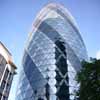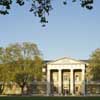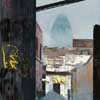The landscape with its clothes on, Jock McFadyen, Rowan Moore, Building, News, Design, Image
The landscape with its clothes on
Exhibition + Discussion Event by Jock McFadyen in London: Information
29 Mar 2010
The landscape with its clothes on Exhibition
A conversation between the artist Jock McFadyen and Rowan Moore, architecture critic of The Observer
The landscape with its clothes on Exhibition + Discussion
20 Apr 2010
Venue: 30th Floor Gallery at CliffordChance
Location: 10 Upper Bank St., Canary Wharf, London, E14 5JJ, UK
Booking essential, RSVP [email protected] or 020 7006 5384
Travelling to Canary Wharf
Jubilee line (nearest stop: Canary Wharf)
Docklands Light Railway (nearest stop: Heron Quays)
Jock McFadyen: The landscape with its clothes on – dates:
12 Mar – 23 Apr 2010
Organiser:
Frank/Hindley Art Consultants for Clifford Chance
Works are for sale, please con
Jock McFadyen : The landscape with its clothes on
Lets propose that Jock McFadyen is a history painter, that once elevated but now maligned painting genre. And not just one of the few but, perhaps, one of the U.K.’s leading history painters focused on the conflicting rhythms of the city, its growth, decay and rebirth.
In recent years, as the depiction of individual people disappeared from his canvases, the artist has brought the background to the fore, the fabric of the city, its buildings and arteries, its canals and roads, to become its characters. Where previously McFadyen might paint dissolute pub strippers or anomic youth, melancholic metaphors of the zeitgeist, today it’s the city’s ruins, monumental constructs surrounded by acre’s of barren wasteland. As the art critic John Ruskin argued nearly 150 years ago, in the Stones of Venice, architecture is a direct projection not just of our physical needs, but of our whole morality.
McFadyen’s urban paintings have a distinct loci. He has made memorial works of Berlin, New York, Belfast and Edinburgh, but its London’s East End, where he has lived and worked for the last 30 yearsthat he returns. The geography of his paintings reaches from the edge of the City, where decaying buildings of the East End rub up against the towers of Capital, past the aspirant Canary Wharf to the sprawling estuarial plain, to the flats of Dagenham now emptied of industry, and up into the Lea Valleybeing rebuilt before our eyes with Olympian zeal. The architectural flux of London, its constant evolution, finds parallel in the artist’s use of allegothe flow of the Thames, the stasis of the canal network and the anticipatory mobility of the A13.
Soneone once wrote that McFadyen was a painter of human unfreedom – but rather than being confined, there is a sense of the salvatory journey implicit in his work. McFadyen may look sympathetically, not to Baudelaire’s 19th century flâneurs who delighted in the banality of the urban life, but at their 20th Century filmic equivalents, the loans wanderers who populate the films of Wenderand Antonioni, pessimistic yet striving. Film also gives McFadyen a key schematic device; the cinematic format of his large–scale canvases. Cinema-scope and a distinct horizon line give tartist space to paint the sky – sometimes dark, ofteovercast but never dazzling – and to tackle what Turner identified as the true subject of painting – Light.
There is a lot of Art in McFadyen’s work. He has called himself a realist painter – ‘The only word I kthat describes what I am aiming at’ – but Realism should not be mistaken for photographic reproduction. As such he joins a distinguished roll of painters of the urban, of bedsits and music halls, of factories and fairgrounds, as found in Sickert and Lowry. The author Iain Sinclair has called McFadyen’the laureate of stagnant canals, filling stations and night football pitches’ .But this dwells on subject matter to the detriment of the process of painting. The import of which can be seen in McFadyen’s treatment of graffiti. Each individual’s tag is tenderlalmost reverentially, faithfully copied. He also likes the odd in-house art joke. The terrible Tate Moss punfound on a broken warehouse, or the Kill Matthew Barney stencil that re-appeared on a canal-side wall – Barney being a New York conceptual film-maker whose talent divides art world opinion.
The American artist Robert Smithson famously commented about the outskirts of New Jersey ththey ‘were a zero panorama (that) seemed to contairuins in reverse, that is, all the new construction that would eventually be built. This is the opposite of the romantic ruin because the buildings don’t fall into ruinafter they are built but rather rise into ruin before they are built’. This finds echoes in McFadyen’s paintings, in his Landscape with its clothes on. Buildings, even the most monumental, contain not only a past history, but also a future one. This thought may by melancholic, even dystopian but as Heraclitus noted ‘Nothing stays the same, everything changes’.
Born in Paisley in 1950, Jock McFadyen studied at Chelsea School of Art. In 1981 he was Artist-in-Residence at the National Gallery, London and in 1992 designed the sets and costumes for The JudaTree at the Royal Opera House. His paintings have been included in numerous exhibitions, most recently at the Whitechapel Gallery, and acquired by major museums in the UK.
Jock McFadyen: The landscape with its clothes on images / information from The Grey Gallery
Location: London, E14 5JJ, UK
English Architecture
Contemporary Architecture in England
English Architecture Design – chronological list
Building depicted above : The Gherkin London aka Swiss Re Building

photo © Adrian Welch
Exhibition organised by Frank/Hindley Art Consultants for Clifford Chance
Saatchi Gallery London

picture © Timothy Soar
Comments / photos for the The landscape with its clothes on Architecture Event page welcome

